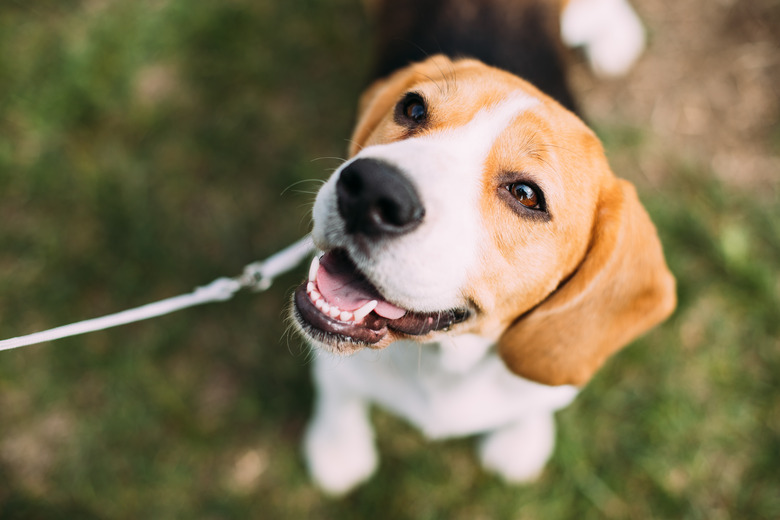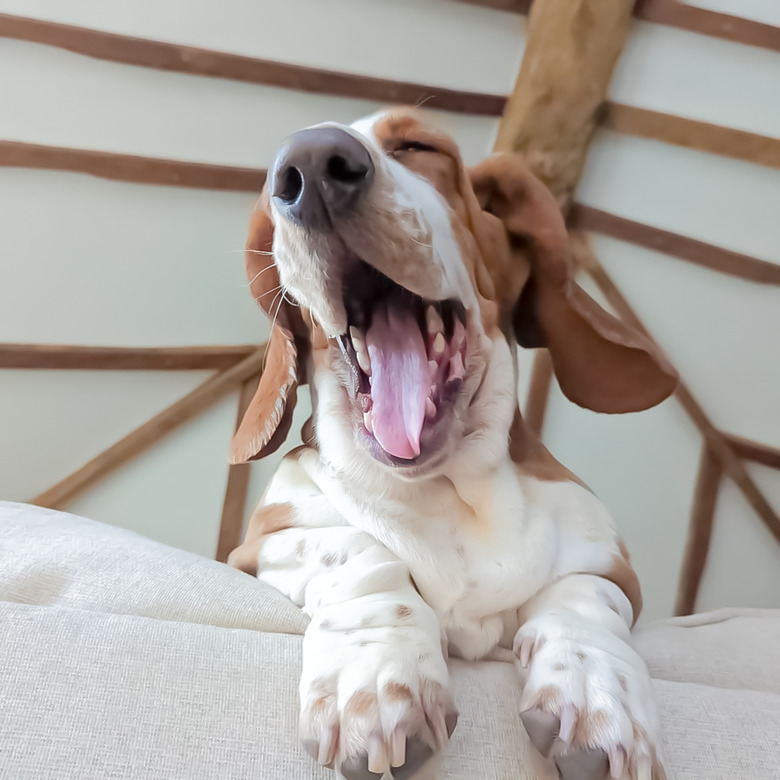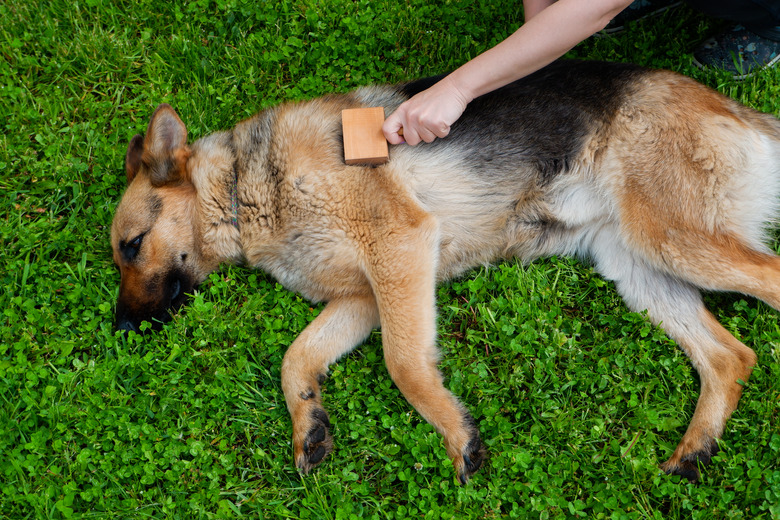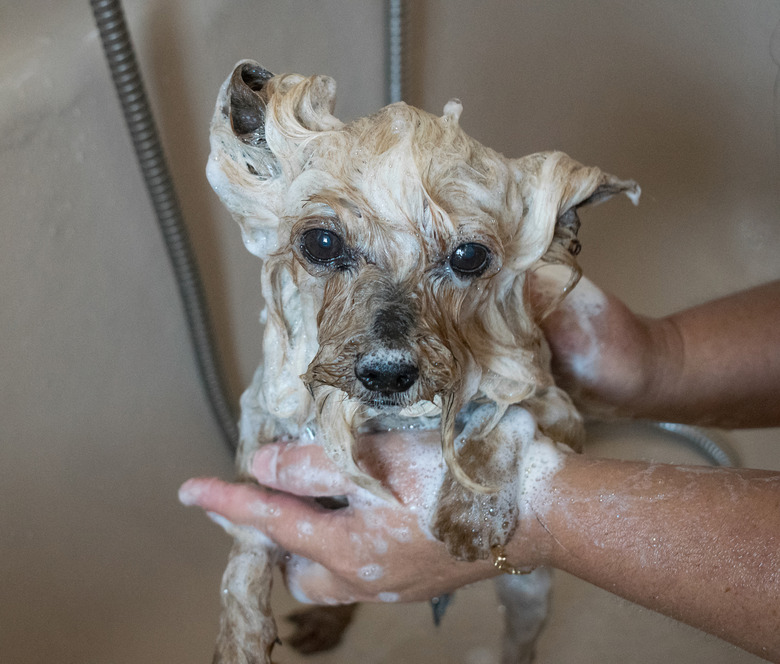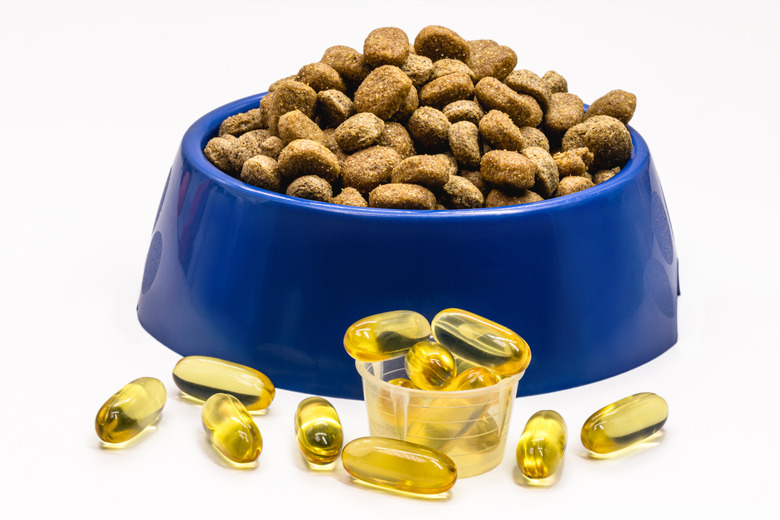Oily Coat Dog: What Causes Oily Hair In Dogs?
Oily hair in dogs is usually caused by a skin disorder known as seborrhea, which can be either secondary seborrhea (meaning it's due to an underlying medical condition) or rarely primary seborrhea, which is inherited. Sometimes, this condition is called seborrheic dermatitis. This ailment causes your pet's skin to be simultaneously oily and flaky. Some dog breeds are particularly susceptible to the inherited form of seborrhea. The treatment for an oily-coat dog can be complex and requires veterinary attention.
What is seborrhea in dogs?
What is seborrhea in dogs?
Whether primary or secondary, seborrhea is a disorder where the skin's sebaceous glands produce too much sebum (oil), and the mechanism with which the body regenerates skin is defective. As a result, the outer layer of skin, which contains a protein called keratin, accumulates. There are two subtypes of seborrhea. The first is dry seborrhea, and the other is oily seborrhea.
If a dog has dry seborrhea (seborrhea sicca), they'll experience symptoms such as:
- Skin flaking
- Dry patches
- Crusty skin
- Hair loss
- Red inflamed skin
- Darkening of the skin due to chronic inflammation
- Itchiness (though primary seborrhea is not usually itchy)
Seborrhea causing oily dog fur (seborrhea oleosa) involves the following symptoms:
- Greasiness of the coat
- Skin odor, such as that due to a secondary yeast and/or bacterial infection
- Ear odor due to secondary ear infections
- Red inflamed skin
- Itchiness
- Ear infections
Dogs who have seborrhea typically possess elements of both types of the disorder. In most cases, seborrhea is a symptom of an underlying cause rather than an ailment in and of itself.
Which dog breeds have oily coats?
Which dog breeds have oily coats?
There are multiple dog breeds that can have an oily coat due to primary seborrhea. Some of the dog breeds that are particularly prone include:
- Basset hounds
- Cocker spaniels
- Dachshunds
- Dobermans
- English springer spaniels
- German shepherds
- Golden retrievers
- Shar-Peis
- Labrador retrievers
- West Highland white terriers
Symptoms are most pronounced in the first two years of life for these breeds. Excessive greasiness may abate as your dog matures.
Secondary seborrhea is triggered by external parasites, such as fleas or mites, food or environmental allergies, diabetes, immune system disorders, and hormonal conditions including hypothyroidism and Cushing's disease.
What are the symptoms of oily coat in dogs?
What are the symptoms of oily coat in dogs?
There are many symptoms of oily coat in dogs. When canines have seborrhea, the condition typically impacts parts of the skin that are heavy in sebaceous glands. The skin located on the back is a good example. These parts of the skin typically come off in flakes that show up wherever dogs spend significant amounts of time, such as their bed. The flakes look like dandruff.
If your pet has seborrhea, you might notice them emitting an oily substance on their stomach, inside the ears, on the neck, and below the elbows and armpits.
You might also discover inflammation and redness of your dog's skin or ears. They might develop lesions that are especially greasy or dry in feel. Unpleasant odors are common in dogs with seborrhea. These smells are generally enhanced in dogs who develop secondary yeast or bacterial infections.
Frequent licking and scratching sometimes indicate that a dog might have this condition. The scratching sometimes leads to loss of hair, bleeding, and even secondary infections.
How do you know when your dog has an oily coat?
How do you know when your dog has an oily coat?
You'll notice that your dog's feet, neck, belly, armpits, and/or areas with skin folds are oily. If your dog also has itching and flaking, they might have seborrhea. Take them to the veterinarian.
Your DVM will do a physical examination and may order tests including:
- Blood tests, including thyroid levels
- Skin cytology
- Skin culture (such as for ringworm)
- Skin scrapings
- Skin biopsies
Once the veterinarian determines the cause of the seborrhea, they can proceed with treating the source. If there doesn't appear to be an underlying condition, such as a hormonal condition, dog food allergy, or skin parasites, they'll diagnose your pet as having primary seborrhea. Since primary seborrhea lacks a cure, veterinarians focus on minimizing the symptoms.
Treatment for an oily-coat dog
Treatment for an oily-coat dog
Treatments for primary seborrhea include medicated anti-seborrheic shampoos, vitamin A, omega-3 fatty acid supplementation, topical retinoids, and moisturizers. Veterinarians will prescribe anti-fungals or antibiotics if they are needed for secondary infections. Treatment for secondary seborrhea also involves addressing the underlying medical condition.
Should your veterinarian suggest medicated shampoo for your pooch, they might shave or clip the fur, especially if it's long, in order to make it easier for medication to reach the skin. Shampoos used to treat seborrhea in dogs often contain components such as chlorhexidine, ketoconazole, miconazole, coal tar, benzoyl peroxide, salicylic acid, and sulfur.
The bottom line
The bottom line
An oily coat in dogs can be caused by a skin condition called seborrhea. Though there is an inherited form called primary seborrhea that affects certain breeds, it is rare. Most dogs with seborrhea have the secondary form, meaning it's due to an underlying medical condition. Regardless of the type, the main symptoms of seborrhea are both a greasy coat and crusty or flaky skin. The primary form is not curable but can be managed with special dog shampoos and other medication. The secondary form is complex to treat because the primary underlying condition, such as an endocrine disorder, has to be addressed in addition to the dog's coat condition.
